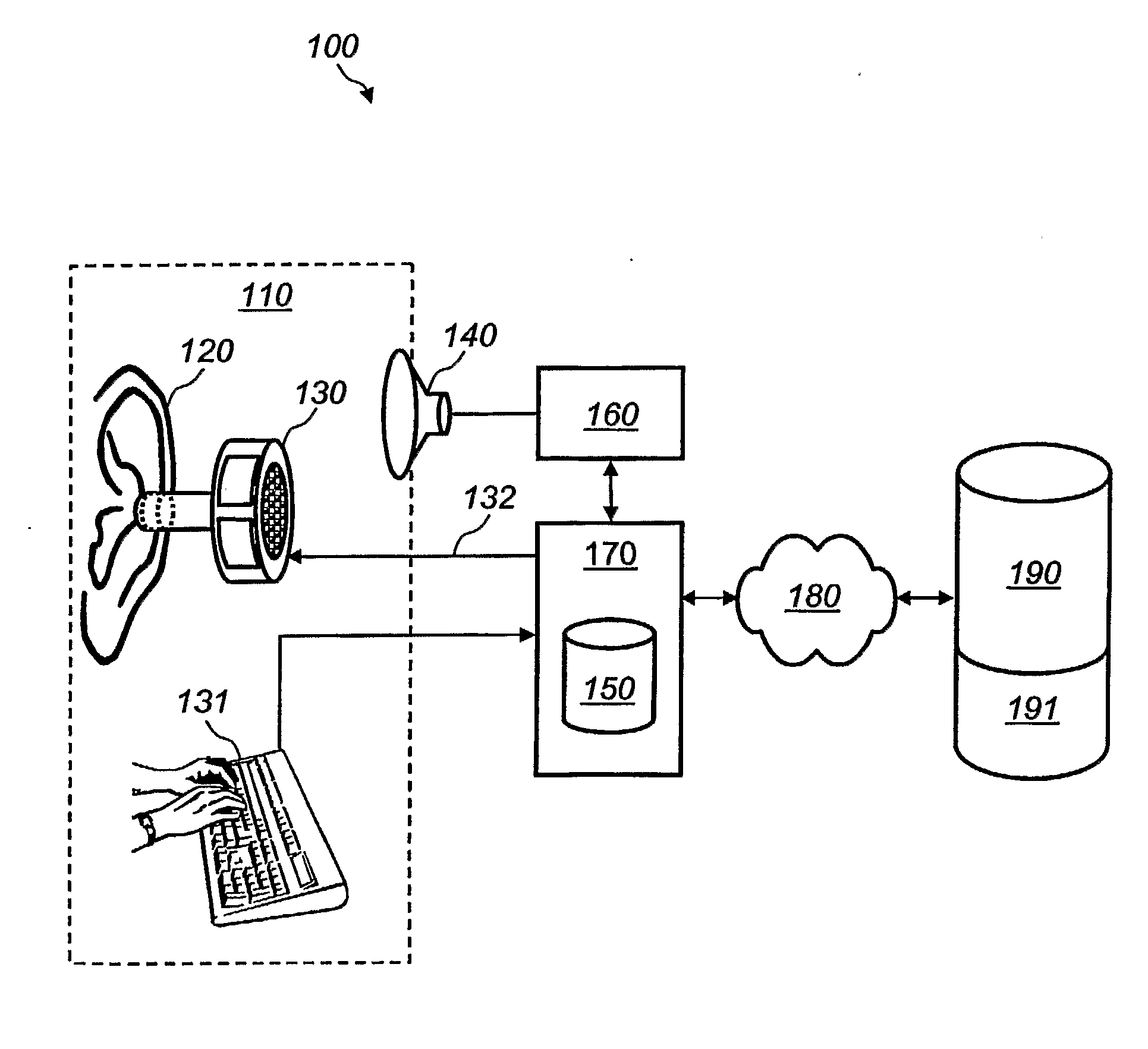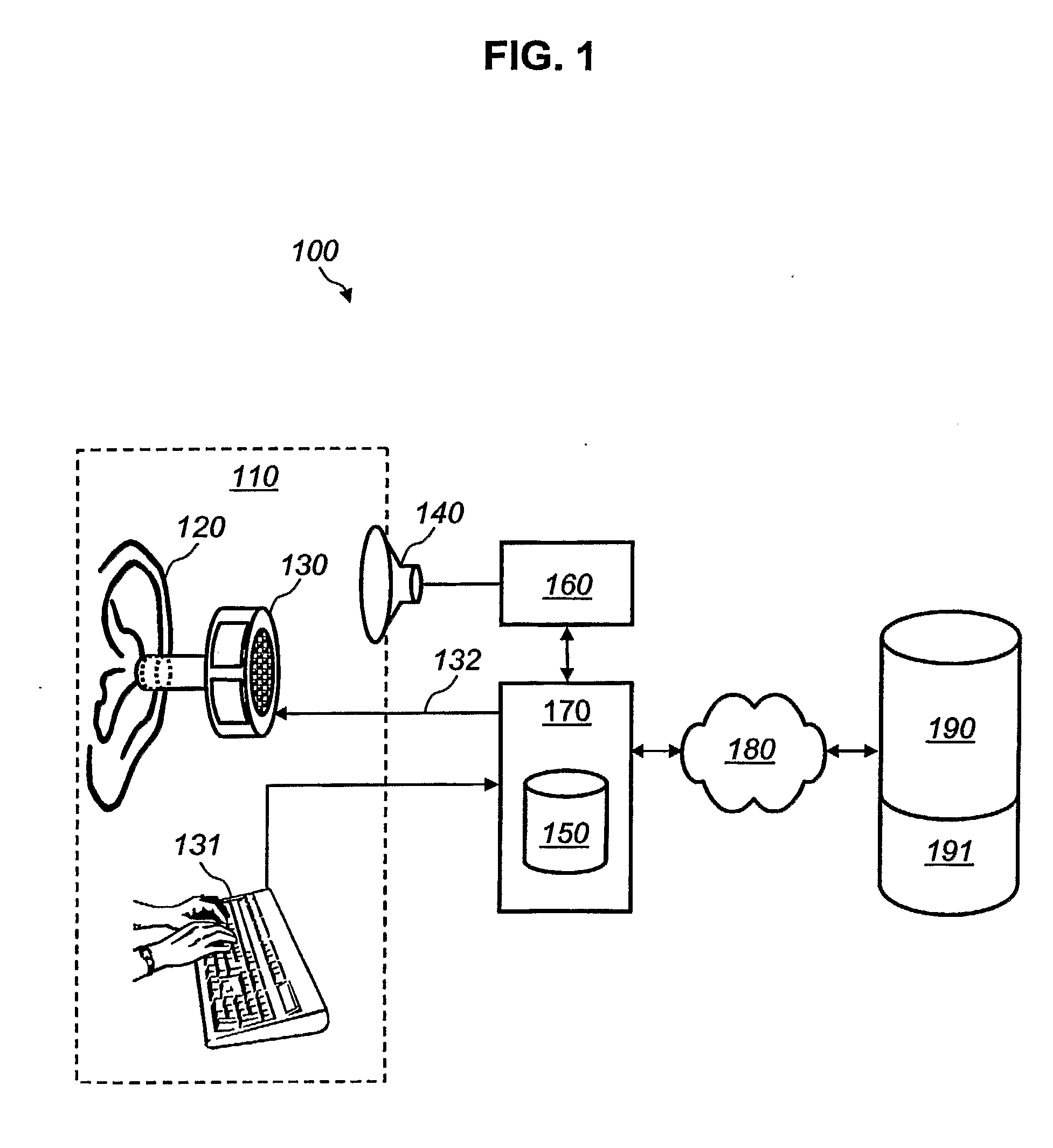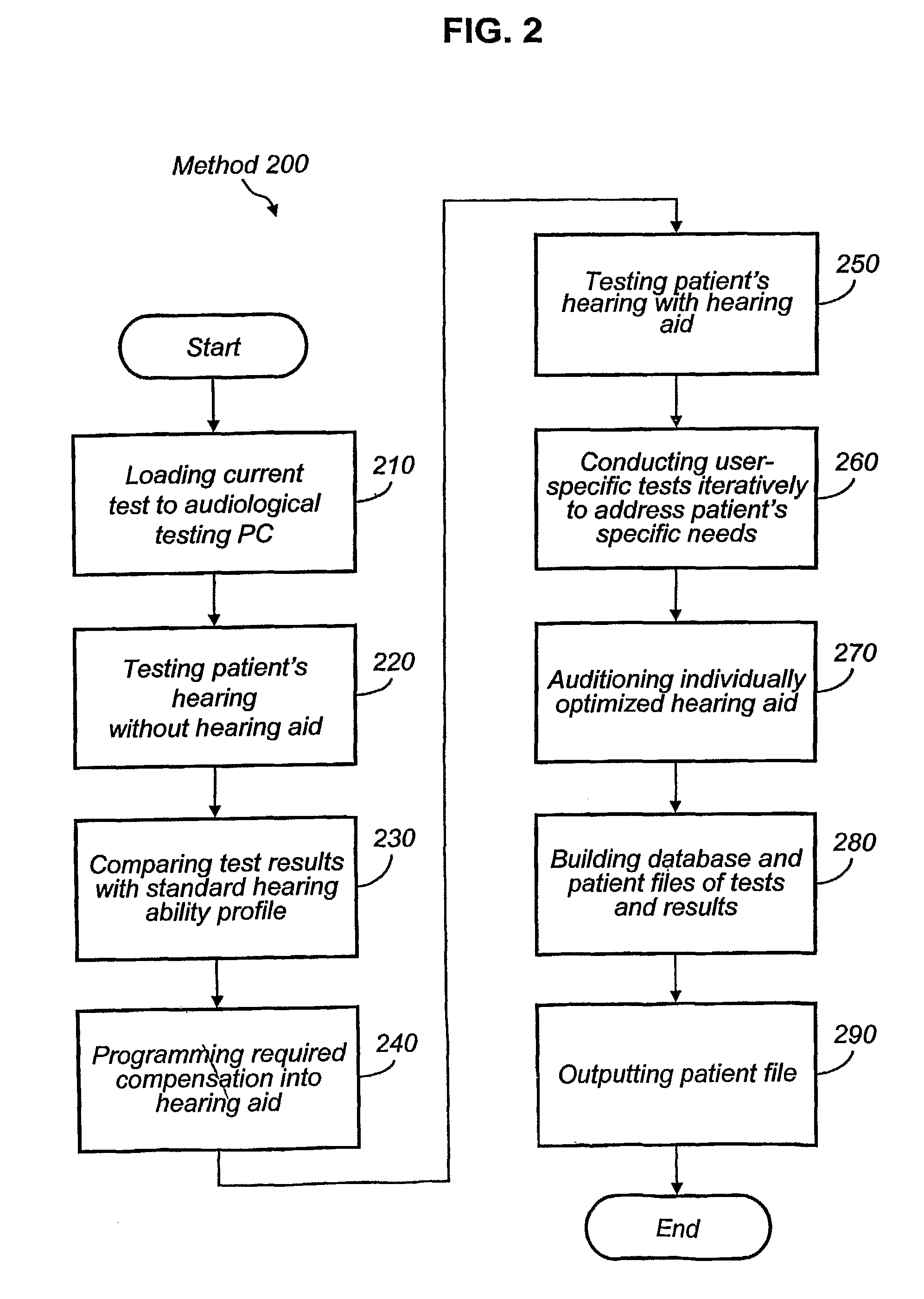System for and Method of Optimizing an Individual's Hearing Aid
- Summary
- Abstract
- Description
- Claims
- Application Information
AI Technical Summary
Benefits of technology
Problems solved by technology
Method used
Image
Examples
Embodiment Construction
[0034]FIG. 1 shows a diagram of an audiological testing system 100 that links remote databases and programmable hearing aids to test hearing and to program hearing aids in real time. System 100 includes an audiological sound room 110 enclosing a patient 120, a hearing aid 130, a patient input device 131, and a sound system 140; an audiological testing PC 170 that contains an amount of memory 150 and that is connected to hearing aid 130 through a hearing aid connection 132 and is also connected to patient input device 131; a sound simulator 160 that is connected to both audiological testing PC 170 and sound system 140; and a central hearing computer system 190 that contains a quantity of user data 191 and that connects to audiological testing PC 170 through the Internet 180.
[0035] Audiological sound room 110 is a standard sound booth that is widely used by audiologists, and includes headphones and a window through which audiologists visually interact with patients. Patient 120 is en...
PUM
 Login to View More
Login to View More Abstract
Description
Claims
Application Information
 Login to View More
Login to View More - R&D Engineer
- R&D Manager
- IP Professional
- Industry Leading Data Capabilities
- Powerful AI technology
- Patent DNA Extraction
Browse by: Latest US Patents, China's latest patents, Technical Efficacy Thesaurus, Application Domain, Technology Topic, Popular Technical Reports.
© 2024 PatSnap. All rights reserved.Legal|Privacy policy|Modern Slavery Act Transparency Statement|Sitemap|About US| Contact US: help@patsnap.com










